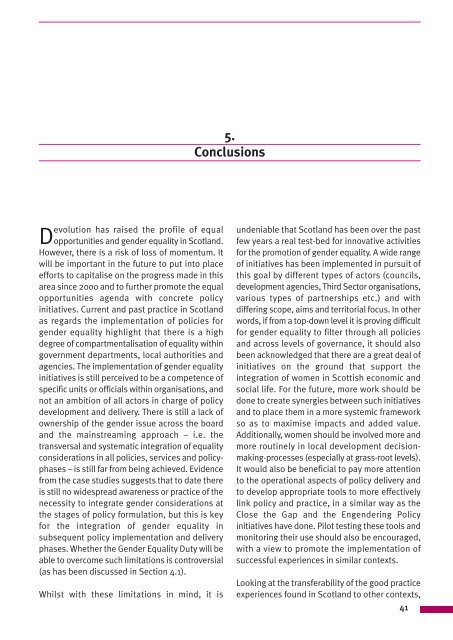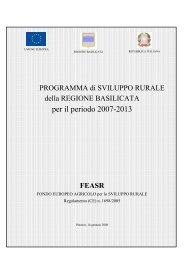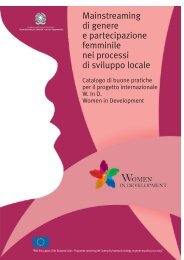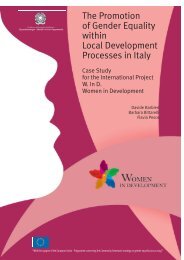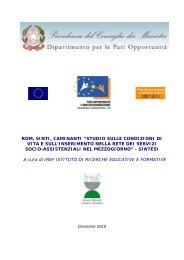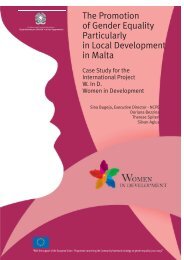3 CASO SCOZIA INGLESE low - Rete Pari Opportunita
3 CASO SCOZIA INGLESE low - Rete Pari Opportunita
3 CASO SCOZIA INGLESE low - Rete Pari Opportunita
- No tags were found...
Create successful ePaper yourself
Turn your PDF publications into a flip-book with our unique Google optimized e-Paper software.
5.ConclusionsDevolution has raised the profile of equalopportunities and gender equality in Scotland.However, there is a risk of loss of momentum. Itwill be important in the future to put into placeefforts to capitalise on the progress made in thisarea since 2000 and to further promote the equalopportunities agenda with concrete policyinitiatives. Current and past practice in Scotlandas regards the implementation of policies forgender equality highlight that there is a highdegree of compartmentalisation of equality withingovernment departments, local authorities andagencies. The implementation of gender equalityinitiatives is still perceived to be a competence ofspecific units or officials within organisations, andnot an ambition of all actors in charge of policydevelopment and delivery. There is still a lack ofownership of the gender issue across the boardand the mainstreaming approach – i.e. thetransversal and systematic integration of equalityconsiderations in all policies, services and policyphases– is still far from being achieved. Evidencefrom the case studies suggests that to date thereis still no widespread awareness or practice of thenecessity to integrate gender considerations atthe stages of policy formulation, but this is keyfor the integration of gender equality insubsequent policy implementation and deliveryphases. Whether the Gender Equality Duty will beable to overcome such limitations is controversial(as has been discussed in Section 4.1).Whilst with these limitations in mind, it isundeniable that Scotland has been over the pastfew years a real test-bed for innovative activitiesfor the promotion of gender equality. A wide rangeof initiatives has been implemented in pursuit ofthis goal by different types of actors (councils,development agencies, Third Sector organisations,various types of partnerships etc.) and withdiffering scope, aims and territorial focus. In otherwords, if from a top-down level it is proving difficultfor gender equality to filter through all policiesand across levels of governance, it should alsobeen acknowledged that there are a great deal ofinitiatives on the ground that support theintegration of women in Scottish economic andsocial life. For the future, more work should bedone to create synergies between such initiativesand to place them in a more systemic frameworkso as to maximise impacts and added value.Additionally, women should be involved more andmore routinely in local development decisionmaking-processes(especially at grass-root levels).It would also be beneficial to pay more attentionto the operational aspects of policy delivery andto develop appropriate tools to more effectivelylink policy and practice, in a similar way as theClose the Gap and the Engendering Policyinitiatives have done. Pilot testing these tools andmonitoring their use should also be encouraged,with a view to promote the implementation ofsuccessful experiences in similar contexts.Looking at the transferability of the good practiceexperiences found in Scotland to other contexts,41


